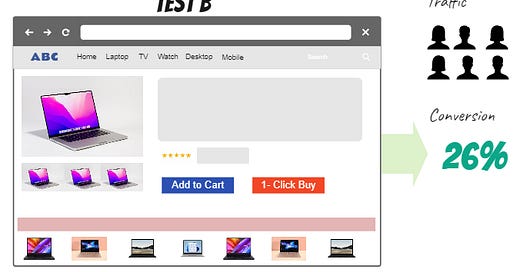A/B Testing 101: How to Use Data to Improve B2C Product Decisions
Here we speak about how A/B Testing Can Help Improve Product Performance and Increase Customer Satisfaction
Organizations don’t make product decisions based on a hunch, especially when they are in a B2C business and dealing with a large number of consumers. It all comes down to data and how it backs up a product idea. Being pragmatic rather than making a bunch of changes on the website always gives the right edge to the business with its customers. And one of the most common methods to gather data on a piece of functionality from your actual audience is A/B testing.
At its most basic, A/B testing compares the two variations of a product to see which performs better. It’s also called Split testing as the users are divided into two groups (the "A" group and the "B" group) and channelled into distinct digital experiences. Few examples on A/B testing applications:
A/B test can be performed for UI/UX or content changes to understand which group of design performs better with users.
A/B testing on upselling product positioning in the standalone journeys, getting the conversion results for both the upsell positioning and keeping the best option.
Optimizing marketing campaigns to the best interactive marketing campaign, followed by commercialising the marketing post that demonstrated the most user engagement.
As a business analyst, it's essential to get the right steps for conducting an A/B Test:
To create the right test cases with the agreed hypothesis. Create both the test sets: A and B and ensure we don’t focus on too many functional testing at the same time
To define the test, exposure and control of the groups. Ensure both cohorts have a decent number of traffic and a good balance between demographic, geographic and behavioural users.
Both the tests on groups A and B should run on the same day at a similar time to ensure the test isn’t biased towards a particular user group
Decide the timeline and repeatability for the tests to run and ensure it’s not deviated
Determine KPIs or outcomes from the test and measure results for both groups
Once the test is completed, it's time for data analysis before decision-making.





Very helpful!